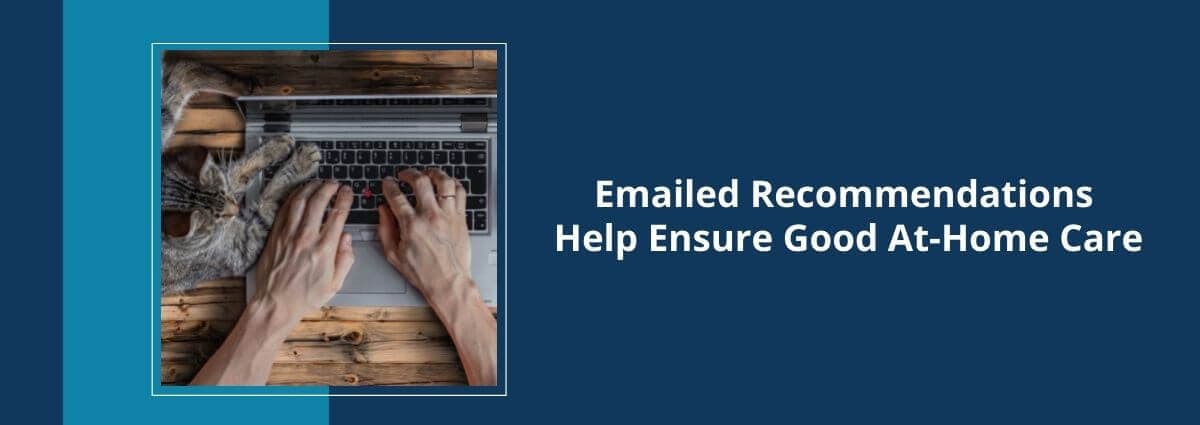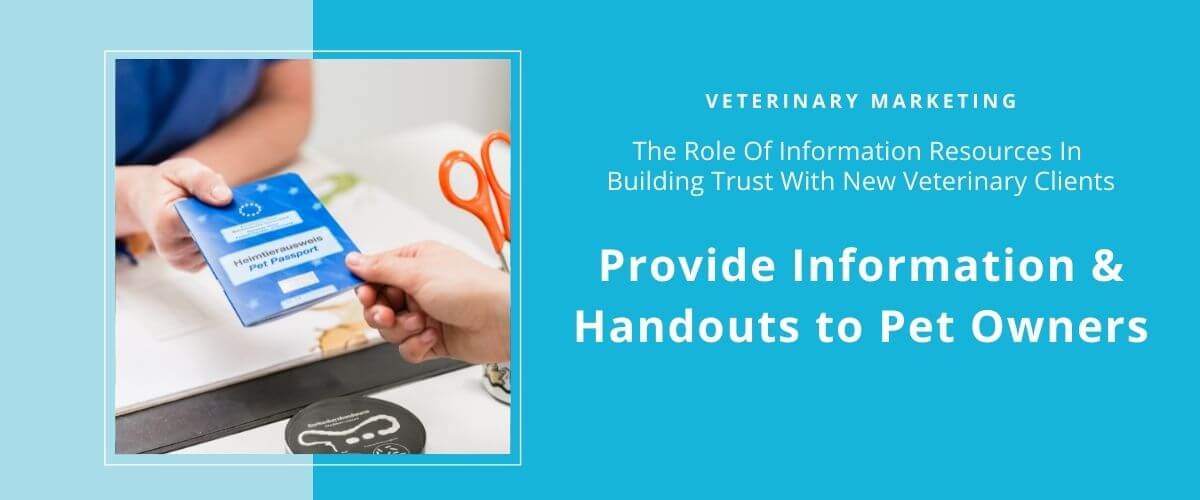The Role Of Information Resources In Building Trust With New Veterinary Clients
A note from GeniusVets! The following blog post was written by one of our founders, Michele Drake, DVM and practice owner of The Drake Center for Veterinary Care. You might wonder why, in an ultra-competitive field like veterinary medicine, Dr. Drake wouldn't want to keep her tips on what has made her practice so profitable close to the vest. But as Dr. Drake has always said, her success (and your success!) can only serve to elevate the field. And because Dr. Drake has also done so well in client acquisition and retention - even in the middle of a pandemic - she'd like to share the ways she uses information resources to build trust with new clientele.
...
During a veterinary appointment, part of building a bonded relationship and administering good patient care is providing information. Client education cements compliance and follow-through, leading to the best outcome for the pet.
People learn in many different ways, and we need to present our recommendations to them via various methods to provide the best veterinary care. This is true of diagnostic information, treatment options, medication doses, follow-up needs, and so much more. Let’s explore how my veterinary staff at The Drake Center for Veterinary Care provides digital, paper, and verbal information to educate their pet owner clients.
Educational via Email
At The Drake Center, we always write up our charts very thoroughly, just as you do at your practice. However, we do so electronically to email important appointment notes to the client later. This email communication allows us to include all sorts of resources, mainly if we’ve diagnosed a new specific condition. For example, if we’ve just seen a cat for urinary tract issues, we may have dispensed medication or a prescription diet, but we want the pet owner to know about the role of enrichment in treating their pet. We can reiterate our recommendations in a few ways when we send an email:
- Further details within the body of the email
- A copy of our appointment notes on this topic
- A link to information on our own website
- A link to a trusted resource
- A pdf attachment
We’ll explore many of these options even more throughout this article.

Another important reason to send this email is to open up a line to a two-way conversation. If you can provide an opportunity for clients to ask for clarification or reminders, they are more likely to follow through on needed at-home care. Plus, they can communicate with you via email at any time of day that works for them. They don’t have to call only during business hours. Help pet owners as much as you can, and they’ll be better able to help their pets.
Brochures and Pamphlets
We also provide physical handouts to enhance the appointment experience at The Drake Center. Paper handouts and brochures are incredibly useful as complements to product recommendations. Pet owners need to understand the benefits to their pet when we want to prescribe parasite preventives, joint supplements, prescription diets, and more. Brochures can also provide data on safety and side effects.
If one-half of a couple brings a pet to an appointment, a brochure gives them something to take home and share with their partner or spouse. You can help lighten pressure when a client wants to involve each necessary family member in decision-making, even if they could not attend an appointment. So even a simple pamphlet can be comforting to your clients; they’ll trust and bond to your practice more when you deemphasize pressure and selling in favor of education and high-quality care.

Of course, pamphlets and brochures provided by product companies are generally well-produced, relatively easy to stock, and convenient to give out. But don’t forget that you can create your own printed materials. If you want more specific information or something more specific to your practice philosophy, consider designing and producing your one-sheet materials. A bonus of this option is the ability to design these with your branding and contact information.
Consistency in Verbal Communication
The quickest and most natural method of relaying pet care information to your clients is via conversation. You’re talking with clients during appointments, after all!
It is vital to continually work on staff training to ensure that all who share recommendations or advice with your clients are saying the same thing. We work so hard at The Drake Center to keep our techs, assistants, and receptionists aligned with our doctors. It’s not that medicine is black and white; in some cases, we have different ways of practicing. But in terms of basic standards of care, which include things like heartworm, flea, and tick prevention, our doctors are in agreement so that all staff verbal communication with clients is consistent. This consistency eliminates confusion and builds trust; your clients can be confident in basic recommendations when they know they would hear the same things from any medical staff member.

What’s on Your Website?
When you have control over the content of your website, you can use the site as yet another communication tool. Above I mentioned that post-appointment emails often include links to resources on our website, but you can also point out these pages during appointments. If you have computers or tablets in exam rooms, you can show these to pet owners, or you can help them navigate to the right places on their phones. Your practice's blog posts, service pages, FAQs, and more can serve as instant, branded sources of information for your clients, and you already know that you approve them. You can take this a step further and use YouTube videos, Pinterest infographics, and other social pet care posts in the same way.

It’s no accident that your practice’s contact information is (or should be!) found on every page of your website. And it means that, even if you create all of your online resources primarily to enhance appointments, your recommendations are accessible not just to pet owners during exam room visits. Search engines could find your content for pet owners who are in other stages of the Customer Journey, including Awareness and Consideration. For those clients who are already bonded to your practice, your website is a trustworthy destination, and they may visit your site directly when seeking pet care tips.
Choosing Trusted Sources
When you rely on outside sources for handouts, brochures, and links, you need to trust those sources. Trustworthy sources would be AAHA, AVMA, AAFP, and other groups like these that we are comfortable with and have known for many years. These you learn about through their industry reputations and your experience practicing medicine.
Beyond the easily identified resources, you’ll have to do some old-fashioned investigating. Take some time to do your own Google searching, and thoroughly read and critique what you find. You may choose to use time at your practice’s doctor's meetings to share findings with one another. It will take time to build a complete library, but the good news is that this library can constantly evolve and update as veterinary medicine itself evolves and updates. Share each new resource with your staff before you share it with your clients as part of that continuous staff training. This presents a win-win for your staff’s professional development and your clients’ ability to provide quality at-home care for their pets.

To ensure that our patients receive the best care, we need to educate their owners even once they leave our exam rooms. We may hand out brochures. We’ll email our exam findings and include resource attachments. We can steer them toward the plethora of information on our website. We might even link them to other trusted sources. The more clients learn about preventive care, illness, and injury pet care, the better!
And remember, there’s a lot of information available for you to learn more about client communication and veterinary marketing! Start at the GeniusVets Blog Library. The more you learn about caring for your veterinary business, the more it can grow! You can also schedule a GeniusVets Demo to learn more about hiring and retaining high-quality employees and improving your profitability.

